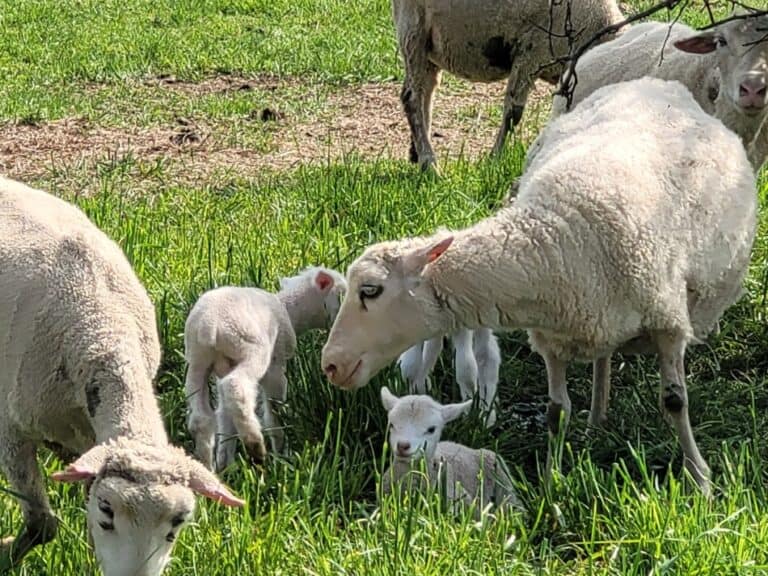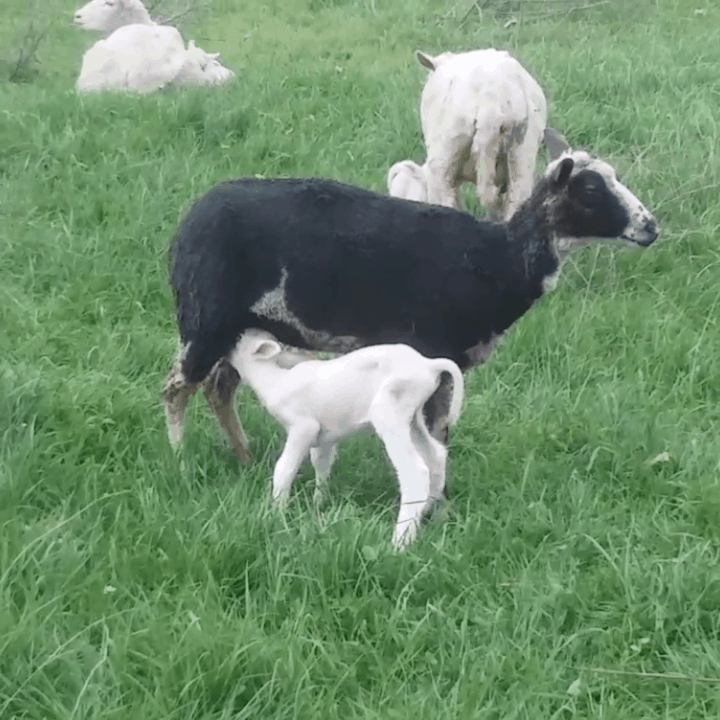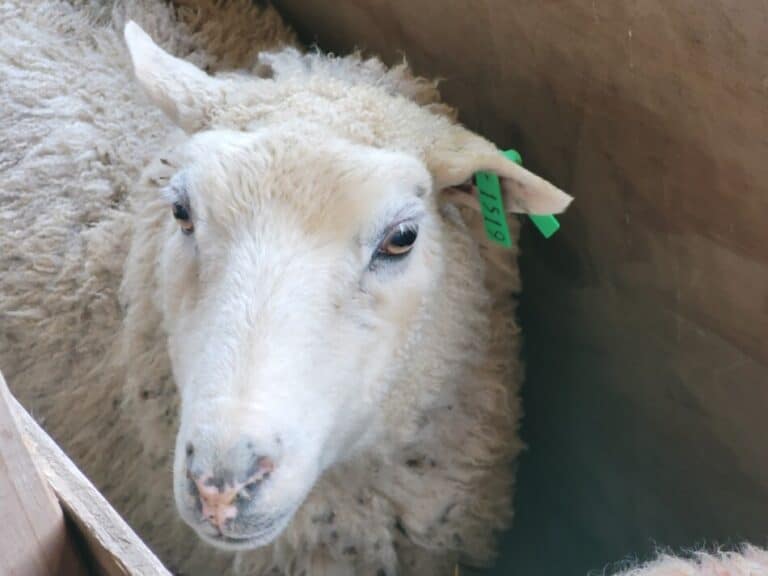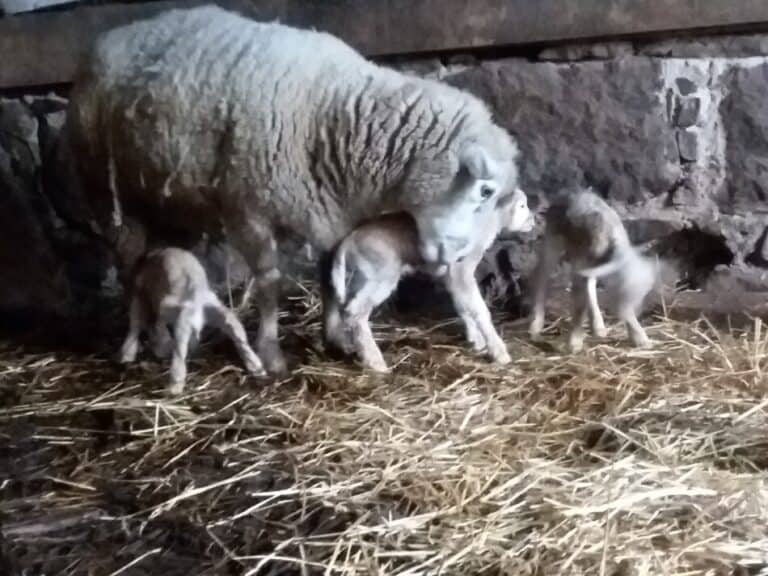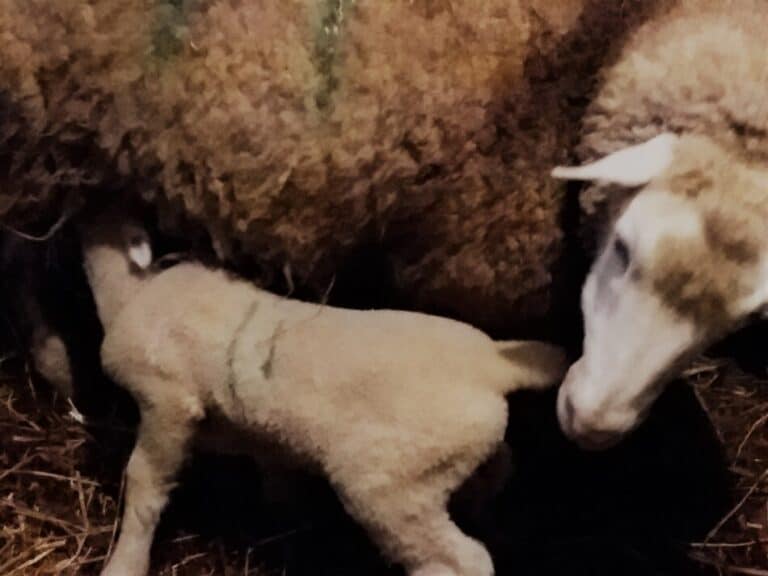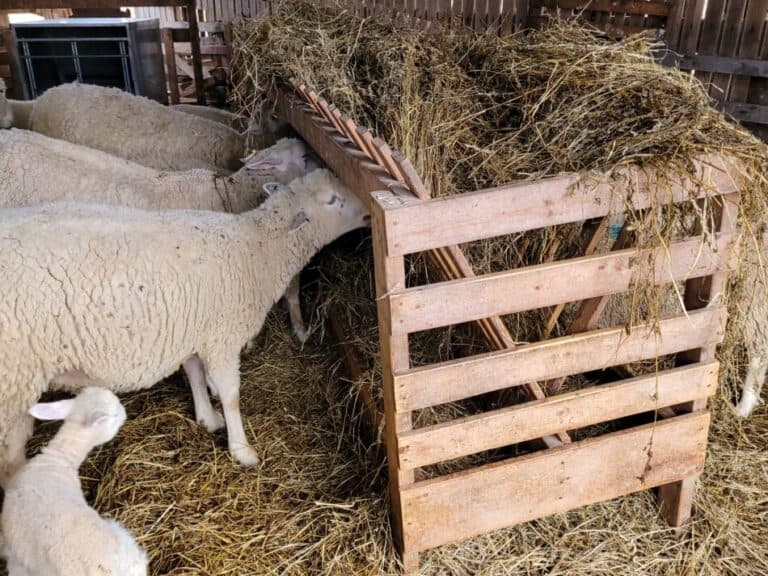Should You Have Multiple Rams? Advantages and Disadvantages
When you have more than a handful of sheep, you reach the point where you could get another ram to make sure that all your ewes get bred on time or to have a spare if anything happens to the first ram.
What are the advantages and disadvantages of having multiple rams in a smaller flock?
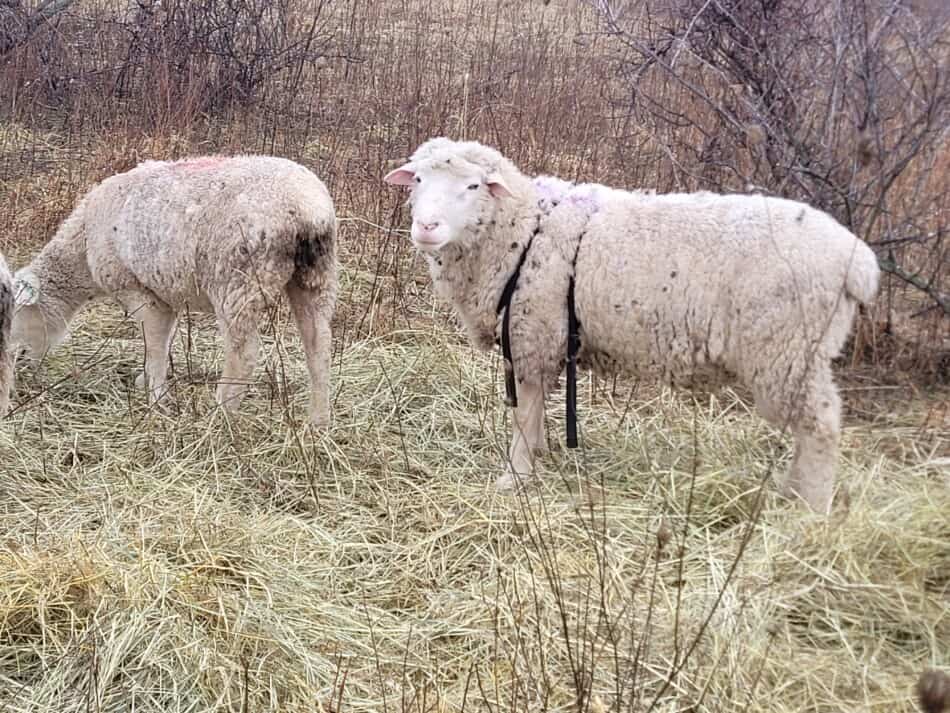
Advantages of having multiple rams
Large flocks run multiple rams each year, they have to in order to ensure that the ewes get bred, so we know it’s doable. But what about more than one ram in a smaller flock? The idea has some merit.
Can You Have 2 (Or More) Rams In A Flock? is my article that goes over the details of keeping more than one ram.
Multiple rams should make a tighter lambing season
When you have multiple rams, you increase the likelihood of getting all of the ewes bred on the first and second cycle in breeding season. This keeps your lambing season tight and easier to manage.
The reason a short lambing season is easier to manage is that it has all of the lambs born during a few weeks, keeping them close to each other in age as well as needs, which is the bigger bonus for you.
Lambs with similar needs can be managed together, the more groups of ewes and lambs you have in a year and the more you have to do for each group the more complicated this whole thing gets.
When you think about it, in lambing season you have a group of peers out there in the ewes, all of which have basically the same space and nutritional needs.
The lambs are also a group, but the catch is they have to be managed together. So the more similar the lambs are to one another, the easier this is going to be for you.
Can You Keep Rams With Ewes Year Round? is my article that goes over when you should turn in your ram to keep your lambing season reasonable.
Competition between rams is good
If you have more than one ram in the flock, there will be a competition between the rams anytime a ewe is in heat.
This is a good thing, it keeps them both on task and looking for ewes to breed before the other ram can, rather than following a favorite one or two and ignoring the rest.
There also is an idea that you have to have at least two breeding males in a group to know that the best sire for the situation bred the female.
Not only is there a competition for breeding, there is also a competition for conception if both males breed the same female, the strongest genetics will win.
Spare ram in case of injury
Hopefully you never have to worry about injury or infertility problems in rams, but they are a possibility which can shut you down if you only have one ram, so we’ll talk about it.
Injury is the easy one, if the ram can not easily walk after the ewes and check to see which ones are in heat for the day, then he is limited if not useless to get your ewes bred.
Injury could be foot problems, lame or run down from illness or a parasite overload, all of which will keep him down enough to restrict or even prevent him from being useful as a ram this season.
Nearly all of these problems are fixable, just not quickly, you must give yourself time to get the rams in top form. Last minute miracles here are not likely to work in time.
Spare ram in the case of infertility
Temporary infertility in rams is generally going to be from heat or stress, which could be from transportation or illness.
This is a ram that would normally be fertile, except for the stressful event that he just had which caused a temporary loss in fertility, but it will come back in about 7 weeks with appropriate care.
If the problem is heat, here is not much you can do about that, except get rams that are adapted to life in your area.
Rams that are heat stressed before joining could still successfully serve ewes up until the sperm stored before the heating are used (about 2–3 weeks), but it will then take 7 weeks to produce new viable sperm.
https://www.business.qld.gov.au/industries/farms-fishing-forestry/agriculture/animal/industries/sheep/breeding/rams/fertility
As far as the stress induced infertility, the best answer there is to have your rams in place at least 60 days before you need to use them, to give them time to recover from the trip to your farm.
The ram can replace sperm damaged due to heat stress, but it takes some time (7 weeks) for that process to work and for him to be able to breed and settle ewes.
There is also permanent infertility, but there is no “how to manage it option” for this. If you suspect your ram in infertile, ask your vet about it to see if there are options or just sell the ram.

Prevents ram from being alone in off season
The part of the year that folks tend to forget about is when you need the ram out of the flock to prevent the ewes from being bred too soon in the year, now where does he go?
If you have multiple rams, you keep the rams together in a pasture or pen that is separate from the ewes, giving the rams a buddy for the off season.
Gives you options for breeding groups
When you have multiple rams, you would also have the option for multiple breeding groups.
For example, if you have a ram that you keep for producing ewe lambs and ram that you keep for producing market lambs, you can section off the ewes that you want to put with each ram.
This would give you the ability to produce your own replacement ewe lambs from a ram that be ideal for female characteristics, but not necessarily ideal for your area’s market lamb needs.
Additionally, if you used two rams and split the flock, you could eliminate the problem of inbreeding, since the sire of the replacements is different than the sire of the terminal (market) lambs.
How Do You Keep Sheep From Inbreeding? is my article that goes over this subject in more detail.

Disadvantages of multiple rams
As with all things, it is not all roses with having multiple rams in your flock, there are a few things that you have to deal with now that you do not have with a single ram.
More rams to feed
First off, since there are more rams to care for you are also providing twice as much feed for the ram part of the flock, as well as having twice as much cost to feed them, as well.
The other catch to feeding rams is that many smaller farmers or new to sheep farmers are not well set up with paddocks, so where are you putting the rams that they have the pasture they need?
Chances are your good pasture is going to the ewes, as it should, but where do these guys hang out? They need a good pasture, too.
If all you have is a second best area to put the rams, you may end up feeding these guys to make up for the lack luster pasture that they are in.
Not great, but it’s where you are at until you can figure out a system that works best for your situation.
Increases breeding stock costs
The second obvious consequence of keeping multiple rams is that your cost to get rams will at least double, since you will need two of them. No surprise here, but it is something to plan for.
How Much Does A Ram Cost? is my article that goes over what you can expect to pay for a ram and how to find the costs for your area.
Multiple rams can hurt each other
Multiple rams can hurt each other, especially if you put them together close to breeding season or when a ewe is in heat.
However, if you put the rams together in the off season, they will become used to one another and tend to behave better in the breeding season.
I’m just putting this in because it is a possibility that you should know about, but once again, if you combine the rams in a non competitive environment, they will normally be fine together.
You may have limited space for flock
If you are tight on space, having multiple rams is probably not the best use of your space. Getting one great ram and keeping him in top health is a better use of your space than having more rams.
Resources:
Maximizing ram fertility at business Queensland lists out that 7 weeks are needed for rams to replace heat damaged sperm
